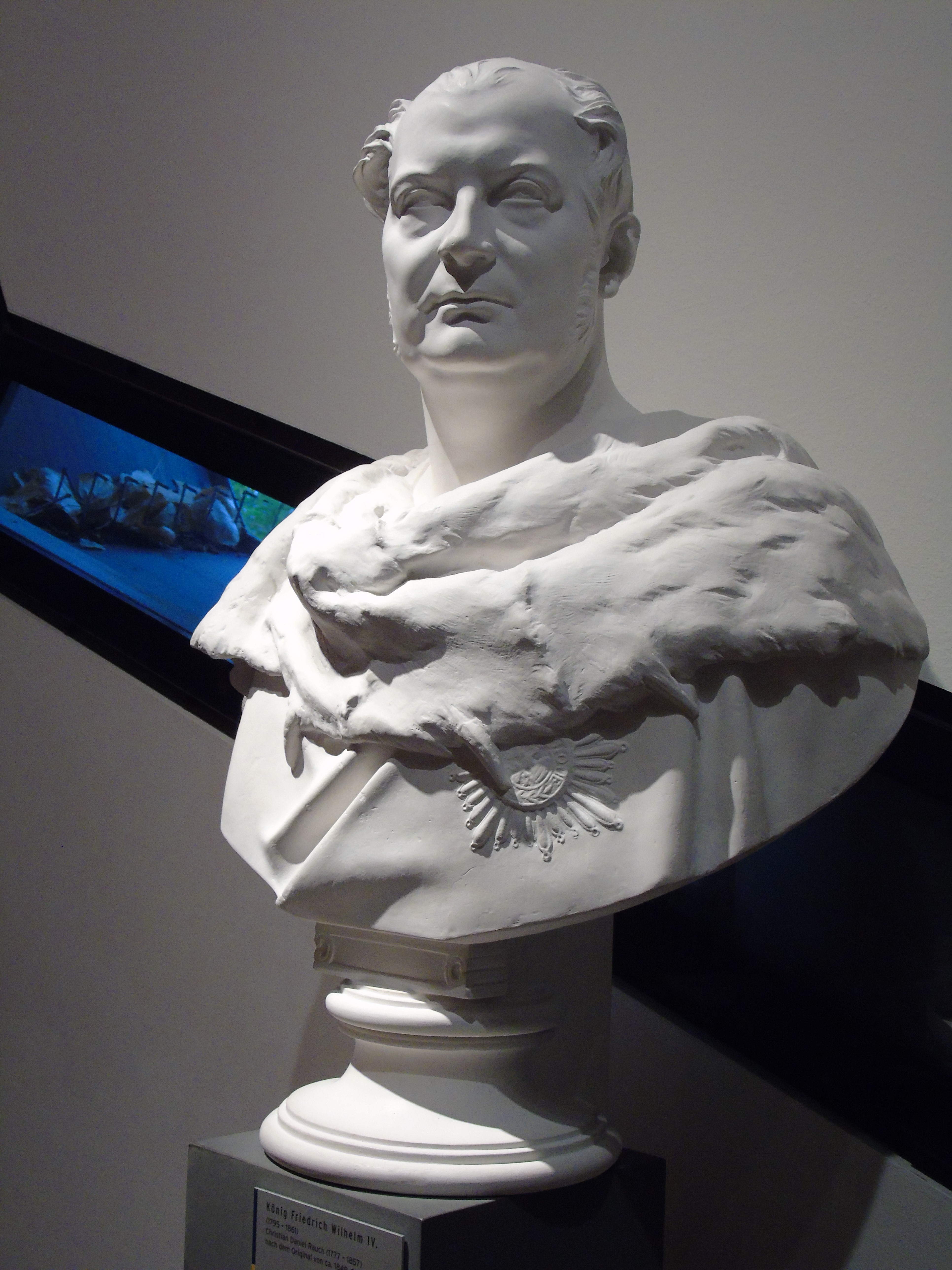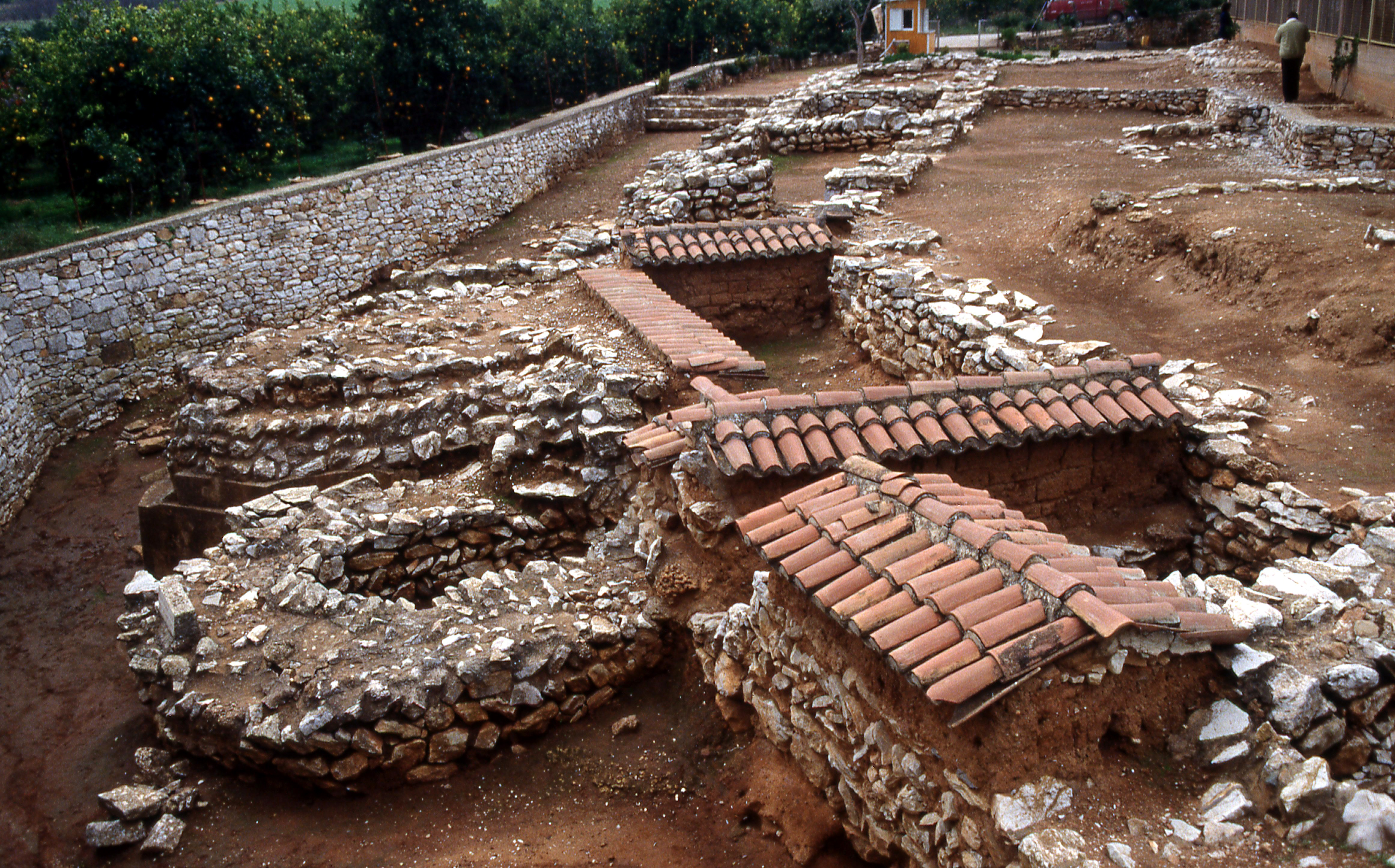|
Korakou Culture
The Korakou culture or Early Helladic II (in some schemes Early Helladic IIA) was an early phase of Bronze Age Greece, in the Early Helladic period, lasting from around 2650 to c.2200 BC. In the Helladic chronology it was preceded by the Eutresis culture of c. 3200 – c. 2650 BC (also called Early Helladic I) and followed by the Tiryns culture (2,200–2,000 BC) or Early Helladic III. In some parts of Greece a Lefkandi culture, or Early Helladic IIB, follows the Korakou; elsewhere the Korakou transitions directly into the Tiryns. Remains of the culture have been excavated widely across south and central mainland Greece, in the Peloponnese, Attica, Euboea, Boeotia, Phocis, and Locris. Examples of Korakou pottery have been found still more widely, as far as Knossos in Crete, Lefkas in the west, Thessaly, and on Ios and Keos in the Cyclades. Many coastal sites were fortified, and in several areas the period ends with a destruction by burning; some settlements are reoccupied b ... [...More Info...] [...Related Items...] OR: [Wikipedia] [Google] [Baidu] |
Keos
Kea ( el, Κέα), also known as Tzia ( el, Τζια) and in ancient history, antiquity Keos ( el, Κέως, la, Ceos), is a Greece, Greek island in the Cyclades archipelago in the Aegean Sea. Kea is part of the Kea-Kythnos regional unit. Geography It is the List of islands of Greece, island of the Cyclades complex that is closest to Attica (about 1 hour by ferry from Lavrio) and is also from Sounion, Cape Sounio as well as SE of Athens. Its climate is arid, and its terrain is hilly. Kea is long from north to south and wide from west to east. The area is with the highest point being Metres above sea level, above sea level. The municipality, which includes the island Makronisos, has an area of . Its capital, Ioulis, is inland at a high altitude (like most ancient Cycladic settlements, for fear of pirates) and is considered quite picturesque. Other major villages of Kea are the port of Korissia and the fishing village of Vourkari. After suffering depopulation for many deca ... [...More Info...] [...Related Items...] OR: [Wikipedia] [Google] [Baidu] |
Pithoi
Pithos (, grc-gre, πίθος, plural: ' ) is the Greek name of a large storage container. The term in English is applied to such containers used among the civilizations that bordered the Mediterranean Sea in the Neolithic, the Bronze Age and the succeeding Iron Age. Pithoi were used for bulk storage, primarily for fluids and grains; they were comparable to the drums, barrels and casks of recent times. The name was different in other languages; for instance, the Hittites used ''harsi-''. Secondarily, discarded pithoi found other uses. Like the ceramic bathtubs of some periods, the size of a pithos made it a convenient coffin. In Middle Helladic burials in Mycenae and Crete, sometimes the bones of the interred were placed in pithoi. The ancient Iberian culture of El Argar used pithoi for coffins in its B phase (1500–1300 BC). The external shape and materials were approximately the same: a ceramic jar about as high as a man, a base for standing, sides nearly straight or gene ... [...More Info...] [...Related Items...] OR: [Wikipedia] [Google] [Baidu] |
Ceramic Slip
A slip is a clay slurry used to produce pottery and other ceramic wares. Liquified clay, in which there is no fixed ratio of water and clay, is called slip or clay slurry which is used either for joining leather-hard (semi-hardened) clay body (pieces of pottery) together by slipcasting with mould, glazing or decorating the pottery by painting or dipping the pottery with slip.What is slip in pottery thepotterywheel.com, accessed 10 July 2021. Pottery on which slip has been applied either for glazing or decoration is called the . Engobe, from the French word for slip, is an |
Tweezer
Tweezers are small hand tools used for grasping objects too small to be easily handled with the human fingers. Tweezers are thumb-driven forceps most likely derived from tongs used to grab or hold hot objects since the dawn of recorded history. In a scientific or medical context, they are normally referred to as just "forceps", a name that is used together with other grasping surgical instruments that resemble pliers, pincers and scissors-like clamps. Tweezers make use of two third-class levers connected at one fixed end (the fulcrum point of each lever), with the pincers at the others. When used, they are commonly held with one hand in a pen grip between the thumb and index finger (sometimes also the middle finger), with the top end resting on the first dorsal interosseous muscle at the webspace between the thumb and index finger. Spring tension holds the grasping ends apart until finger pressure is applied. This provides an extended pinch and allows the user to easily gra ... [...More Info...] [...Related Items...] OR: [Wikipedia] [Google] [Baidu] |
Tumulus
A tumulus (plural tumuli) is a mound of earth and stones raised over a grave or graves. Tumuli are also known as barrows, burial mounds or ''kurgans'', and may be found throughout much of the world. A cairn, which is a mound of stones built for various purposes, may also originally have been a tumulus. Tumuli are often categorised according to their external apparent shape. In this respect, a long barrow is a long tumulus, usually constructed on top of several burials, such as passage graves. A round barrow is a round tumulus, also commonly constructed on top of burials. The internal structure and architecture of both long and round barrows has a broad range; the categorization only refers to the external apparent shape. The method of may involve a dolmen, a cist, a mortuary enclosure, a mortuary house, or a chamber tomb. Examples of barrows include Duggleby Howe and Maeshowe. Etymology The word ''tumulus'' is Latin for 'mound' or 'small hill', which is derived from th ... [...More Info...] [...Related Items...] OR: [Wikipedia] [Google] [Baidu] |
Schist
Schist ( ) is a medium-grained metamorphic rock showing pronounced schistosity. This means that the rock is composed of mineral grains easily seen with a low-power hand lens, oriented in such a way that the rock is easily split into thin flakes or plates. This texture (geology), texture reflects a high content of platy minerals, such as micas, talc, chlorite group, chlorite, or graphite. These are often interleaved with more granular minerals, such as feldspar or quartz. Schist typically forms during regional metamorphism accompanying the process of mountain building (orogeny) and usually reflects a medium Metamorphism#Metamorphic grades, grade of metamorphism. Schist can form from many different kinds of rocks, including sedimentary rocks such as mudstones and igneous rocks such as tuffs. Schist metamorphosed from mudstone is particularly common and is often very rich in mica (a ''mica schist''). Where the type of the original rock (the protolith) is discernible, the schist is us ... [...More Info...] [...Related Items...] OR: [Wikipedia] [Google] [Baidu] |
Terracotta
Terracotta, terra cotta, or terra-cotta (; ; ), in its material sense as an earthenware substrate, is a clay-based ceramic glaze, unglazed or glazed ceramic where the pottery firing, fired body is porous. In applied art, craft, construction, and architecture, terracotta is the term normally used for sculpture made in earthenware and also for various practical uses, including bowl (vessel), vessels (notably flower pots), water and waste water pipes, tile, roofing tiles, bricks, and surface embellishment in building construction. The term is also used to refer to the natural Terra cotta (color), brownish orange color of most terracotta. In archaeology and art history, "terracotta" is often used to describe objects such as figurines not made on a potter's wheel. Vessels and other objects that are or might be made on a wheel from the same material are called earthenware pottery; the choice of term depends on the type of object rather than the material or firing technique. Unglazed ... [...More Info...] [...Related Items...] OR: [Wikipedia] [Google] [Baidu] |
Stucco
Stucco or render is a construction material made of aggregates, a binder, and water. Stucco is applied wet and hardens to a very dense solid. It is used as a decorative coating for walls and ceilings, exterior walls, and as a sculptural and artistic material in architecture. Stucco can be applied on construction materials such as metal, expanded metal lath, concrete, cinder block, or clay brick and adobe for decorative and structural purposes. In English, "stucco" sometimes refers to a coating for the outside of a building and "plaster" to a coating for interiors; as described below, however, the materials themselves often have little to no differences. Other European languages, notably Italian, do not have the same distinction; ''stucco'' means ''plaster'' in Italian and serves for both. Composition The basic composition of stucco is cement, water, and sand. The difference in nomenclature between stucco, plaster, and mortar is based more on use than composition. Until ... [...More Info...] [...Related Items...] OR: [Wikipedia] [Google] [Baidu] |
Socle (architecture)
In architecture, a socle is a short plinth used to support a pedestal, sculpture, or column. In English, the term tends to be most used for the bases for rather small sculptures, with plinth or pedestal preferred for larger examples. This is not the case in French. In the field of archaeology this term refers to a wall base, frequently of stone, that supports the upper part of the wall, which is made of a different material – frequently mudbrick. This was a typical building practice in ancient Greece, resulting in the frequent preservation of the plans of ancient buildings only in their stone-built lower walls, as at the city of Olynthos.Maher, Matthew P, ''The Fortifications of Arkadian City States in the Classical and Hellenistic Periods'', p. 36, 2017, Oxford University Press, , 9780191090202google books/ref> A very early example is the two-storey fortified House of the Tiles at Lerna in the Peloponnese, built of mud-brick over a stone socle, with much use of wood, and cl ... [...More Info...] [...Related Items...] OR: [Wikipedia] [Google] [Baidu] |
Lerna
In classical Greece, Lerna ( el, Λέρνη) was a region of springs and a former lake near the east coast of the Peloponnesus, south of Argos. Even though much of the area is marshy, Lerna is located on a geographically narrow point between mountains and the sea, along an ancient route from the Argolid to the southern Peloponnese; this location may have resulted in the importance of the settlement. Its site near the village Mili at the Argolic Gulf is most famous as the lair of the Lernaean Hydra, the chthonic many-headed water snake, a creature of great antiquity when Heracles killed it, as the second of his labors. The strong Karstic springs remained; the lake, diminished to a silt lagoon by the 19th century, has vanished. Lerna is notable for several archaeological sites, including an Early Bronze Age structure known as House of the Tiles, dating to the Early Helladic period II (2500–2300 BC). Myths The secret of the Lernaean spring was the gift of Poseidon when he l ... [...More Info...] [...Related Items...] OR: [Wikipedia] [Google] [Baidu] |





.jpg)


